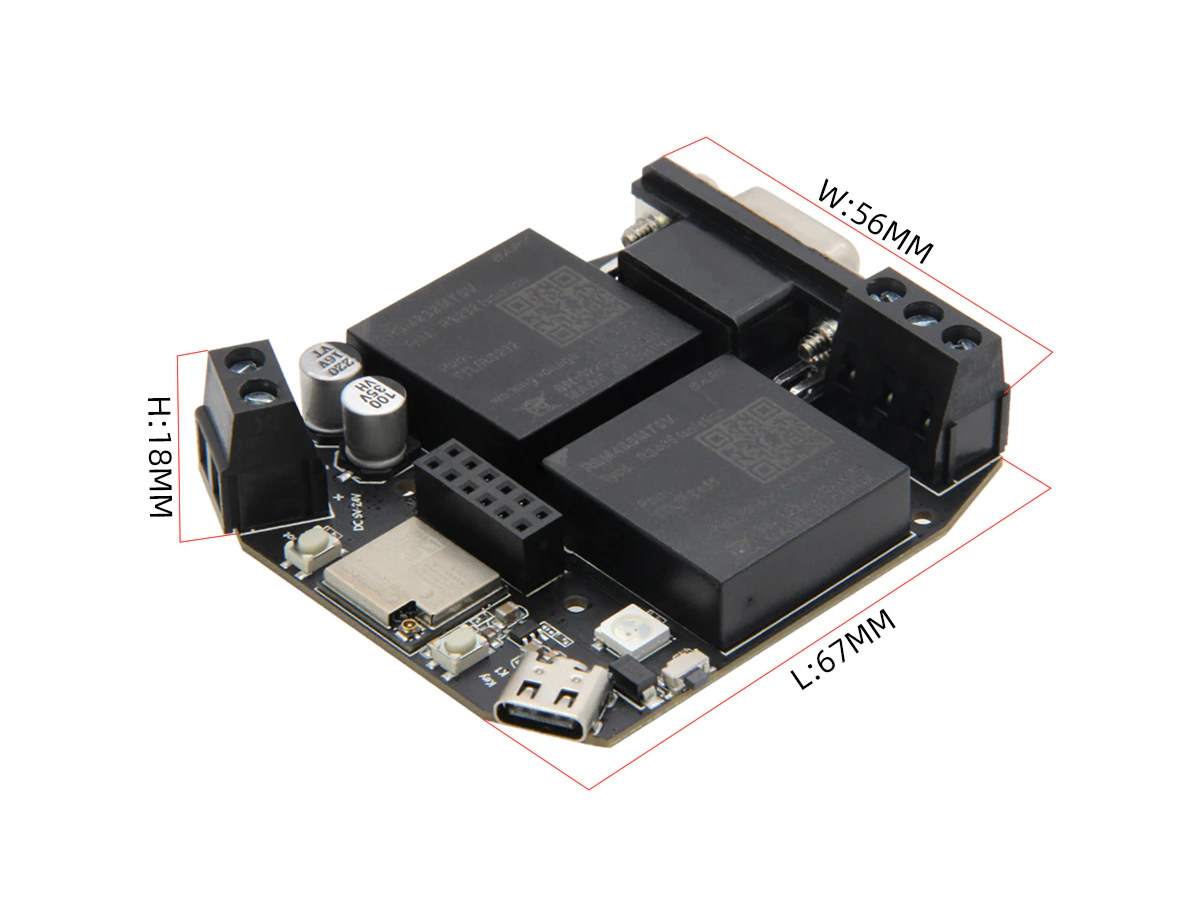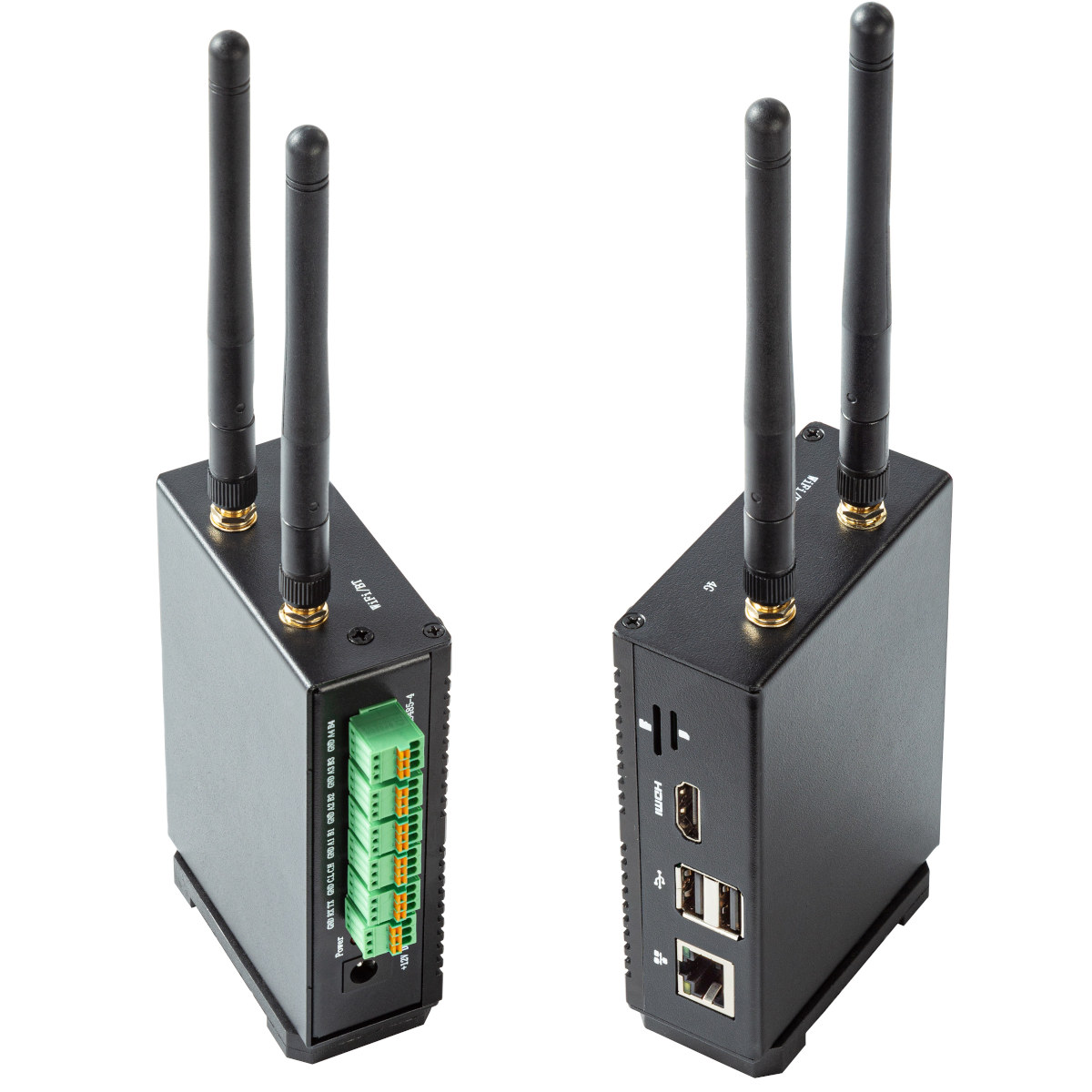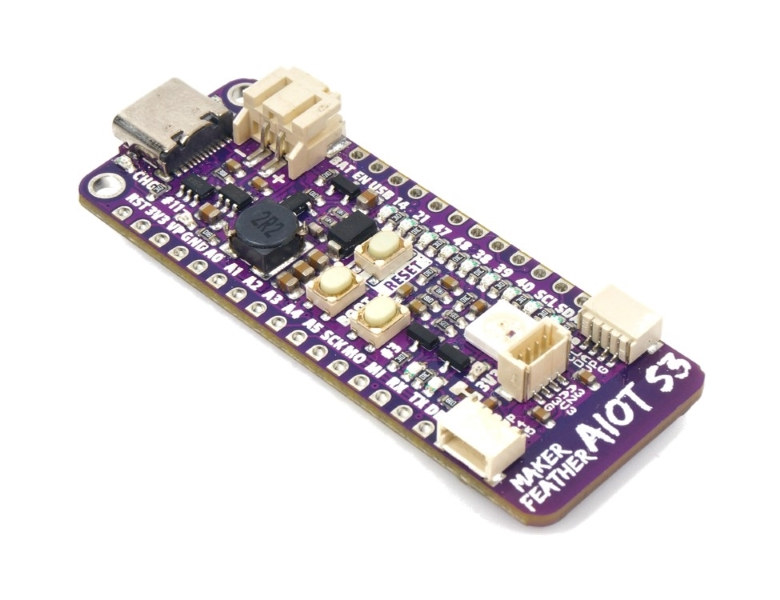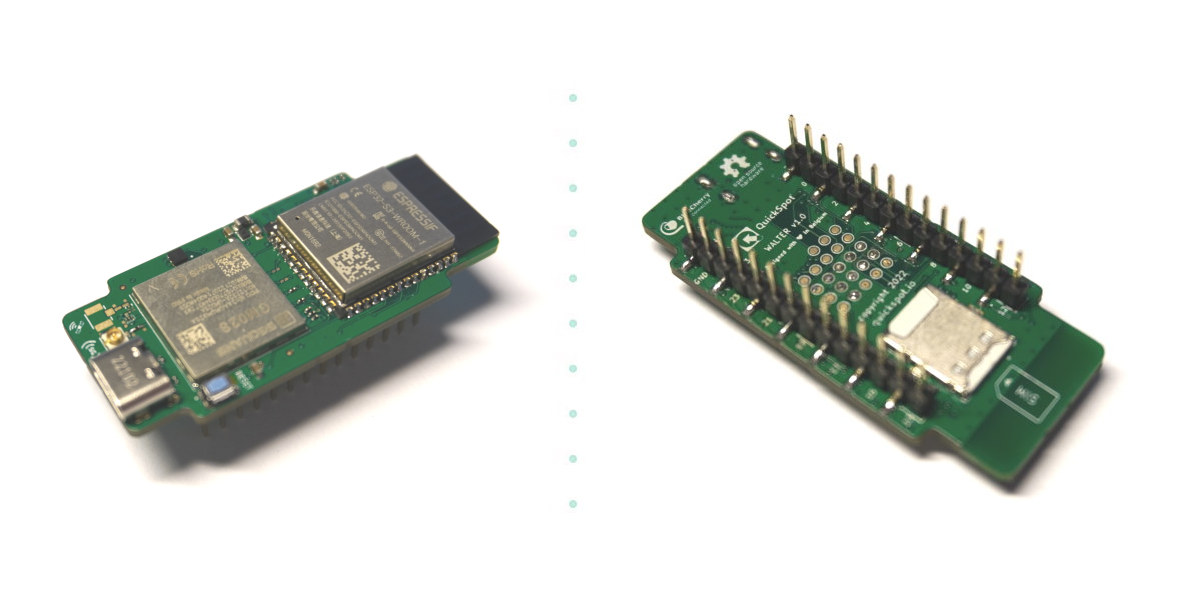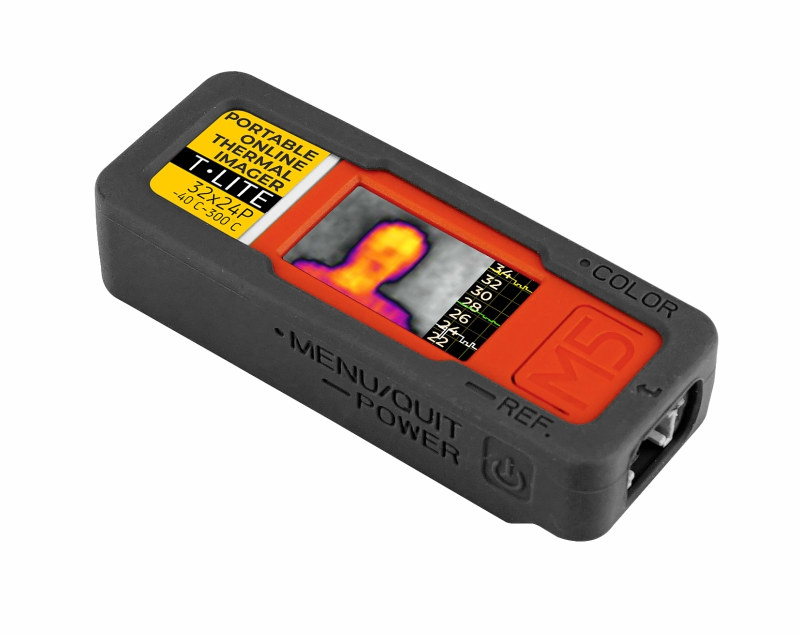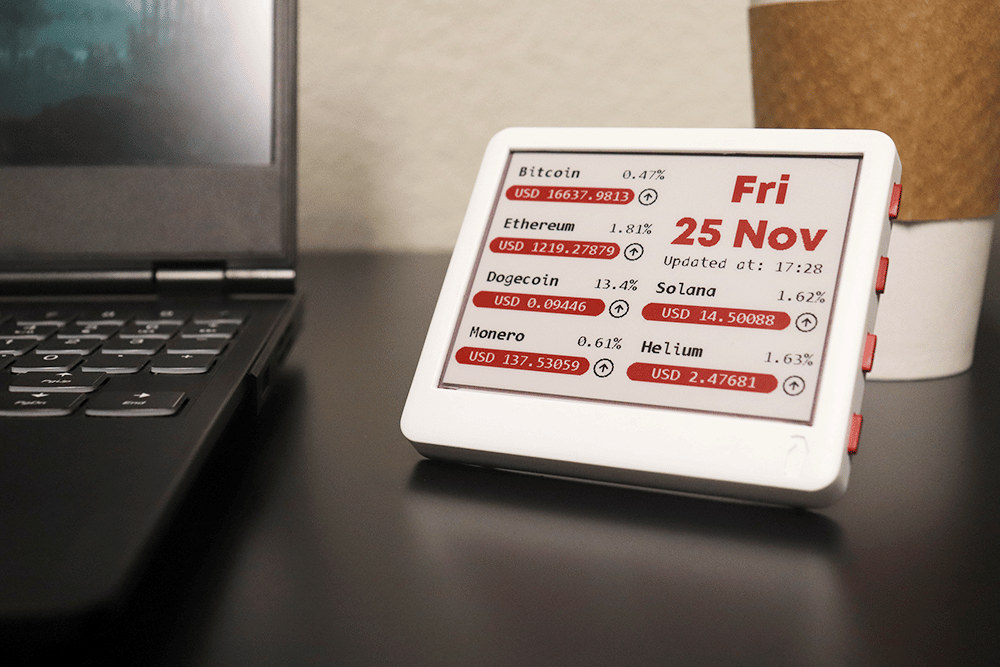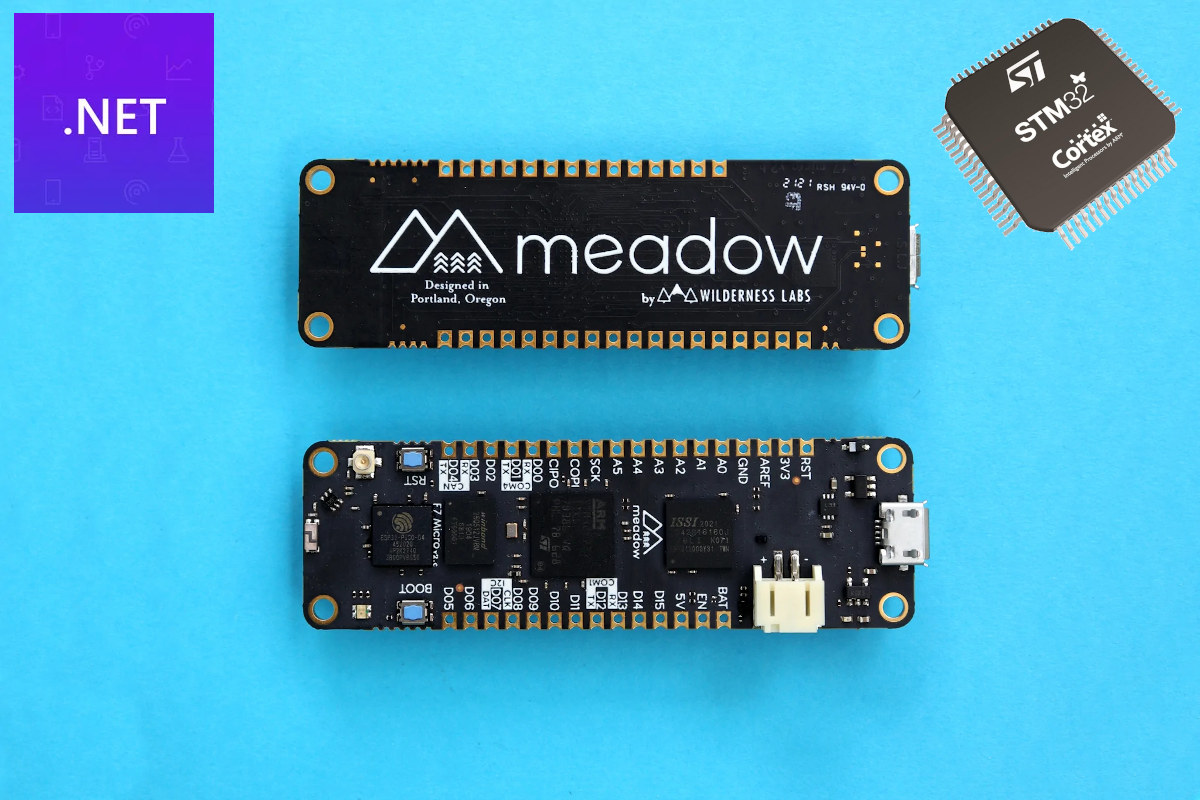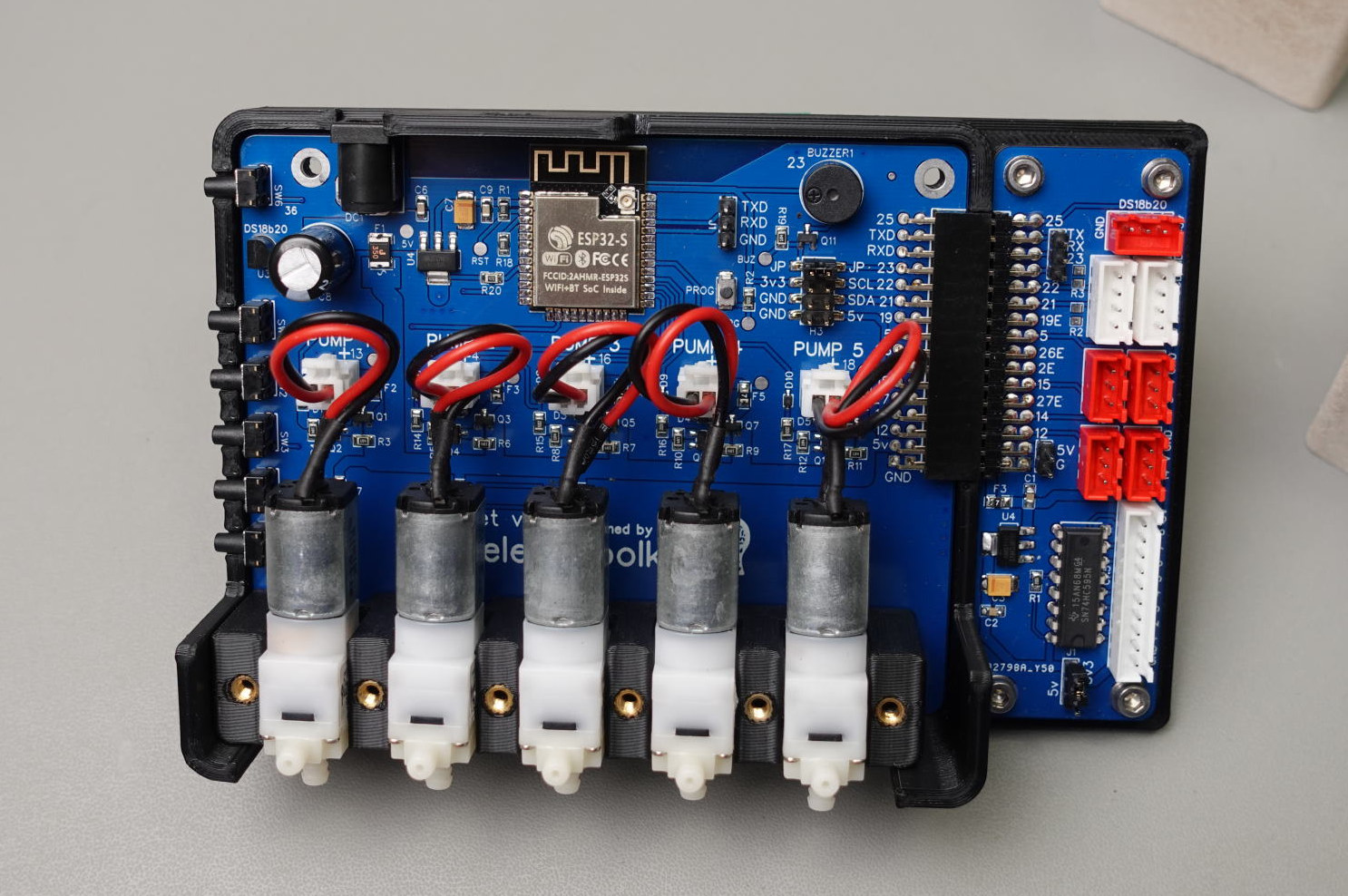LILYGO T-RSC3 is a relatively compact ESP32-C3 board with WiFi 4 and Bluetooth LE 5.0 connectivity, support for RS232 and RS485 communication protocols through a DB9 connector and a terminal connector respectively, and a wide 5V to 24V DC power input. LILYGO had already made an ESP32 board with CAN Bus and RS485 interfaces called the T-CAN485, but without any isolation. The new T-RSC3 offers both RS232 and RS485 interfaces, but no CAN Bus, protected by isolated transceiver modules that should make it safer to use in industrial environments. LILYGO T-RSC3 board specifications: Wireless module – Espressif Systems ESP32-C3-MINI-1U module with ESP32-C3 RISC-V microcontroller @ 160 MHz with 400 KB SRAM, 2.4 GHz WiFi 4, Bluetooth 5.0 LE & Mesh, 4MB flash, and a u.FL antenna connector Industrial control interfaces RS232 via DB9 connector, RSM232MT5V isolated transceiver with 3000V isolation, 4.75~5.25V input, 5V/50mA output, baud rate from 1200 to 256,000 […]
EDATEC CM4 Sensing industrial computer offers CAN bus, RS485, and RS232 interfaces
EDATEC CM4 Sensing is a compact industrial computer based on the Raspberry Pi Compute Module 4 (CM4) with multiple RS485, RS232, and CAN bus interfaces, an HDMI port, two USB ports, Gigabit Ethernet, and optional WiFi, Bluetooth, and/or 4G LTE connectivity. The industrial mini PC can operate in the -25 to 70°C temperature range, supports 8 to 28V DC wide voltage input, includes an RTC, and the single board computer also features a MIPI DSI interface to connect the official Raspberry Pi 7-inch display as well as an FPC interface with HDMI and USB touch. EDATEC CM4 Sensing specifications: SoM – Raspberry Pi CM4 module with Broadcom BCM2711 quad-core Cortex-A72 SoC, 1GB to 8GB LPDDR4 RAM, and up to 32GB eMMC flash Storage – MicroSD card socket for data storage. It can work with the eMMC flash on the CM4 module Display I/F 1x HDMI 2.0 Type-A port up […]
Maker Feather AIoT S3 – An ESP32-S3 board programmable with CircuitPython or Arduino
Cytron Maker Feather AIoT S3 is an ESP32-S3 board compatible with the Adafruit Feather form factor and suitable for makers and STEM education with features like LEDs for GPIOs, a buzzer, expansion headers and connectors, and support for CircuitPython & Arduino. The WiFi and Bluetooth LE IoT board also supports LiPo and Li-Ion batteries, includes a USB Type-C port for power/charging and programming, and a few buttons. It’s suitable for machine learning thanks to the vector extensions found in the ESP32-S3 microcontroller. Maker Feather AIoT S3 specifications: Wireless module – Espressif ESP32-S3-WROOM-1-N8R8 module with ESP32-S3 dual-core LX7 microprocessor @ up to 240 MHz with Vector extension for machine learning, 8MB FLASH, 8MB PSRAM, WiFi 4 and Bluetooth 5 LE/Mesh USB – 1x USB Type-C port power and programming Expansion 2x GPIO headers compatible with Adafruit Feather form factor and FeatherWing add-on boards 3x Maker Ports compatible with Qwiic, STEMMA QT, […]
Walter ESP32-S3 board supports NB-IoT, LTE-M, and GPS
QuickSpot Walter is an ESP32-S3 development board with built-in WiFi 4 and Bluetooth LE/Mesh connectivity, as well as NB-IoT, LTE-M, and GNSS support through a Sequans GM02SP 5G IoT modem that appears to be a variant of the Sequans Monarch 2 GM02S with GNSS support. Walter specifications: Wireless modules ESP32-S3-WROOM-1-N16R2 module ESP32-S3 dual-core LX7 microcontroller 2MB QSPI PSRAM 16MB QSPI flash 802.11 b/g/n WiFi 4 up to 150 Mbps with on-board antenna Bluetooth 5 LE up to 2Mbps, Bluetooth Mesh Sequans GM02SP modem LTE Cat M1 (LTE-M) and NB1/NB2 (NB-IoT) GNSS and assisted GNSS using GPS and Galileo constellations NanoSIM for cellular connectivity I/Os 2x 14-pin headers with up to 24x GPIO, UART, VIN, 3.3V, and GND 23x test points 3.3V I/O voltage Power Supply 5V (3.0 to 5.5V) DC via VIN pin 5V via USB Type-C port Dimensions – 55 x 24.8 mm Temperature Range – -40°C to +85°C […]
M5Stack T-Lite Wi-Fi thermal camera integrates 1.14-inch color display
M5Stack T-Lite is a Wi-Fi thermal imager with the same MLX90640 IR array thermal camera found in the M5Stack Thermal Camera 2 Unit plus a 1.14-inch color display to visualize the results on the device itself. Based on the ESP32-PICO-D4 system-in-package with WiFi and Bluetooth, the solution allows the user to access the 32×24 pixels thermal image either on the built-in display, or streamed to the local network or the cloud. M5Stack T-Lite specifications: SiP – ESP32-PICO-D4 system-in-package with ESP32 dual-core Tensilica LX6 microcontroller with 448 KB ROM and 520 KB SRAM, 2.4 GHz WiFi 4 and Bluetooth 4.2, and a 4MB SPI flash Thermal camera – Melexis MLX90640 infrared (IR) sensor with 32×24 pixels IR array, range: -40°C to 300°C with +/-1.5°C resolution, FoV: 110°x75° (See datasheet) Display – 1.14 inch color TFT LCD with 240×135 resolution, ST7789v2 driver Expansion – 4-pin Grove HY2.0-4P interface (“Port A”) with I2C, […]
Merlot is an open-source hardware tricolor wireless E-paper display
paperd.ink Merlot is a tricolor E-paper display with an open-source hardware control board based on ESP32 wireless SoC that is programmable with Arduino, MicroPython, or the ESP-IDF framework. We first wrote about the paperd.ink 4.2-inch ESP32-based monochrome e-Paper display last year, but the company has now refined its design with the “paperd.ink Classic” replacing the 3D printed enclosure with a vacuum cast enclosure and adding a 1,900 mAh battery. They also launched a new model, the Merlot, based on the same design but with a display supporting three colors: black, white, and red. Merlot specifications: Wireless module – ESP32-WROOM-32 module with ESP32 dual-core processor, 4 MB SPI flash, 2.4 GHz WiFi 4 & Bluetooth LE connectivity Storage – MicroSD card slot for storing images, files, etc Display – 4.2″ tricolor e-Paper display with 400 x 300 resolution; full refresh: ~ 17 seconds; partial update: also 17 seconds… USB – 1x […]
Meadow F7v2 Feather STM32F7 MCU board supports .NET, C# programing
Wilderness Labs Meadow F7v2 Feather is an STM32F7 Arm Cortex-M7 development board following the Adafruit Feather form factor and programmable with C# through a lightweight implementation of the .NET framework. We had previously seen the .NET Framework running on Android and Linux thanks to Xamarin’s Mono, but I don’t think I had ever a microcontroller-class board supporting the .NET framework and C# programming. But that’s exactly what the Meadow F7v2 Feather does. Meadow F7v2 Feather specifications: MCU – STMicro STM32F7 Arm Cortex-M7 microcontroller @ 216 MHz with 2D graphics and JPEG accelerators Memory – 32MB RAM Storage – 64MB flash Connectivity – 2.4 GHz WiFi and BLE (ESP32) with onboard and external u.FL antennas USB – 1x Micro USB port for power and programming Expansion with through and castellated holes with up to 25x GPIO, 12x PWM, 6x analog inputs, 2x DAC, I2C, I2S input/output, SPI, UART, CAN Bus Misc […]
DROPLET irrigation system works with ESPhome and Home assistant
When PricelessToolkit failed to find an affordable (indoor) irrigation system that works with Home Assistant and ESPHome, he built the DROPLET board based on ESP32 wireless SoC and supporting up to five micro-pumps and soil moisture sensors. The board also comes with switches to manually control the pump, a built-in DS18B20 temperature sensor, a buzzer, and a I/O header to connect an expansion header for relay control, I2C, GPIOs, and an external DS18B20 temperature sensor. DROPLET specifications: Wireless module – ESP32-S with ESP32 dual-core 32-bit microcontroller @ 240 MHz with 2.4 GHz WiFi and Bluetooth connectivity, 4MB SPI flash Display – I2C header for 5V/3.3V OLED display Pump interfaces – 5x 2-pin connectors for micropumps Sensors and sensor interfaces DS18B20 temperature sensor 5x 3-pin connectors for soil moisture sensors; pulled low with a 1 MΩ resistor. Expansion – 2x 16-pin right-angle female header with GPIOs, UART, 5V, and GND Debugging […]


